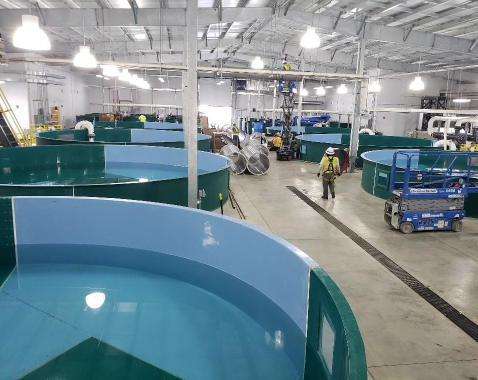Council Approves Tribes' Hatchery Master Plan for Yakima River Coho and Chinook Salmon
- January 04, 2021
- John Harrison
In December 2020, the Council approved the Yakama Nation’s hatchery master plan for improving runs of coho and Chinook salmon in the Yakima River Basin. In its approval, the Council noted the important contributions to this work by Melvin Sampson, a long-time Yakama fisheries official, tribal elder, and Chair of the Tribal Council. Sampson, who is credited with initiating the program in the 1990s, died December 11, 2020, at the age of 82. The Tribe’s hatchery facility for coho salmon, completed on the Yakima River about five miles northwest of Ellensburg, Washington, in 2020, is named in his honor.

The master plan calls for upgrading facilities at Prosser, Washington, for a segregated coho program (fish are genetically segregated from the local natural populations) and two Chinook hatchery programs, one of them an integrated summer/fall Chinook program (hatchery and wild fish are genetically integrated), and the other a segregated upriver bright program, in the Yakima River Basin. Upriver brights are fall-run Chinook that spawn in upriver areas of the Columbia, notably the Hanford Reach. The plan also addresses necessary upgrades to the existing Prosser Hatchery to support these programs. The Revised Master Plan also addresses the proposed facility upgrades necessary for the tribe's wild steelhead kelt reconditioning program. Kelts are steelhead that go back to the ocean after spawning and then return to spawn again, a characteristic unique to the species.
The primary purpose of the proposed coho and Chinook programs is to increase harvest of these species in both the mainstem Columbia and Yakima rivers. These programs will also help meet the cultural objectives for ceremonial and subsistence use. In addition, the summer/fall Chinook programs addressed in the hatchery master plan are designed to meet the conservation objectives of reestablishing locally adapted populations upstream of Prosser Dam and increasing the diversity of naturally spawning populations.

The master plan envisions increasing production of summer Chinook from 200,000 smolts to 1 million annually, and initiating a fall Chinook program that would release up to 500,000 juveniles. A separate program for upriver bright fall Chinook would continue to release up to 1.9 million juveniles. In total, the master plan foresees increasing the number of all juvenile fish released annually from about 2.3 million to as many as 3.4 million.
The facility improvements and production increases have an estimated cost of $41 million. The Tribe and the Bonneville Power Administration plan to discuss funding options.
“This project is important to restoring self-sustaining populations of salmon in all the historical runs that were in the Yakima and Klickitat,” said Joe Blodgett, program manager for the Yakima/Klickitat Fisheries Project. “This is important to the Tribe as well as to the fish.”
Blodgett credited Sampson for “… putting together a great team of scientists to work on fish restoration in the Yakima Basin.”
Bill Bosch, data manager of the fisheries project, told the Council, “we need the Yakima Basin to be the workhorse it once was in terms of producing fish if we are going to meet our restoration goals in the Columbia River Basin.”



